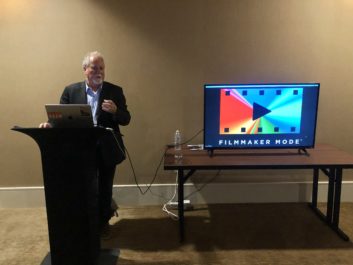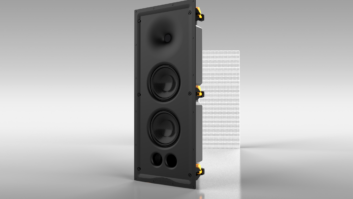Today’s televisions are more capable than ever before when it comes to immersing consumers in the world of cinema. However, with standard settings, it’s possible they’re not watching films the way they were meant to be seen.

On Thursday at CEDIA Expo, the UHD Alliance held a press conference to announce Filmmaker Mode, a collaboration between the alliance, filmmakers, CE manufacturers, and Hollywood studios that aims to ensure that consumers can enjoy films and episodic television in their homes in the way their creators intended.
“When we started the organization about five years ago, our mission was to ensure that we could help consumers get a premium experience and maintain creative intent,” said Michael Fidler, president of the UHD Alliance. “This is no different; in fact, it takes it to whole new level, because the creators are actually involved in the development process itself.”
In the works for some 18 months, Filmmaker Mode was conceived of by several directors including Martin Scorsese and Christopher Nolan, who reached out to the UHD Alliance with their vision of enabling the faithful reproduction of their cinematic visions in consumers’ homes.
From a technical standpoint, the goal of Filmmaker Mode is to preserve the correct aspect ratio, colors, and frame rates when playing back both SDR and HDR content. It sets a white point at D65, and disables some of the typical post-processing settings that some televisions impose on video, in particular motion interpolation, overscan, sharpening, and noise reduction.
“Most of it involves brining that experience in the home to what the director sees when they’re in the color grading suite,” Fidler said. “They’re preparing material for release to home video, and they’re looking, of course, at some very sophisticated professional monitors that try to deliver the color, the accuracy, the tone, the texture, the shading—obviously, that’s part of the storytelling, part of that emotion.”
Key to the mode is ease of activation, as most consumers don’t want to scroll through settings on their TVs. So, manufacturers must either include a button on their remote to enable it, or allow metadata-based automatic switching. At launch, manufacturer partners include LG, Vizio, and Panasonic in the European market. Product and implementation plans will be announced by these companies once they’re done developing the compatible products.
“This is the directors’ heart and soul,” Fidler said. “They really want to be able themselves to go home and watch the movies the way they know they were intended to be shown. And that’s a real important part of how this started and how it’s evolving, and how it was developed.”
Want more stories from CEDIA Expo 2019?
CEDIA Expo 2019 Show Daily—VIP Issue
CEDIA Expo 2019 Show Daily—Day 1
CEDIA Expo 2019 Show Daily—Day 2





